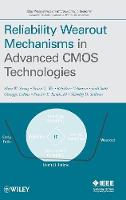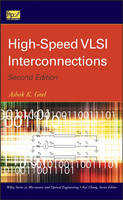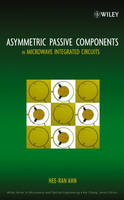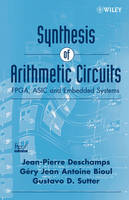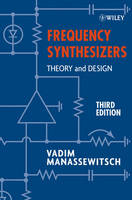Microelectronic Applications of Chemical Mechanical Planarization
 -15%
portes grátis
-15%
portes grátis
Microelectronic Applications of Chemical Mechanical Planarization
Li, Yuzhuo
John Wiley & Sons Inc
11/2007
760
Dura
Inglês
9780471719199
15 a 20 dias
1198
Contributing Authors xxiii
1 Why CMP? 1
Yuzhuo Li
1.1 Introduction 1
1.2 Preparation of Planar Surface 2
1.2.1 Multilevel Metallization and the Need for Planarization 2
1.2.2 Degrees of Planarization 4
1.2.3 Methods of Planarization 5
1.2.4 Chemical and Mechanical Planarization of Dielectric Films 7
1.2.5 Preparation of Planar Thin Films for Non-IC Applications Using CMP 8
1.3 Formation of Functional Microstructures 9
1.3.1 RC Delay and New Interconnect Materials 9
1.3.2 Damascene and Dual Damascene 12
1.3.3 Tungsten CMP 15
1.3.4 STI 16
1.4 CMP to Correct Defects 19
1.5 Advantages and Disadvantages of CMP 20
1.6 Conclusion 21
2 Current and Future Challenges in CMP Materials 25
Mansour Moinpour
2.1 Introduction 25
2.2 Historic Prospective and Future Trends 27
2.3 CMP Material Characterization 32
2.3.1 Thermal Effects 33
2.3.2 Slurry Rheology Studies 35
2.3.3 Slurry-Pad Interactions 38
2.3.4 Pad Groove Effects 42
2.3.5 Pad-Wafer Contact and Slarry Transport: Dual Emission Laser Induced Fluorescence 43
2.3.6 Dynamic Nuclear Magnetic Resonance 45
2.3.7 CMP Slurry Stability and Correlation with Defectivity 49
2.4 Conclusions 51
3 Processing Tools for Manufacturing 57
Manabu Tsujimura
3.1 CMP Operation and Characteristics 57
3.2 Description of the CMP Process 59
3.3 Overview of Polishers 60
3.3.1 CMP System 60
3.3.2 Brief History of CMP Systems 61
3.3.3 Diversity in CMP Tools 62
3.3.4 Polisher 62
3.3.5 Cleaning Module in a Dry-in/Dry-out System 64
3.4 Carriers and Dressers 65
3.4.1 Functions of Carriers and Dressers 65
3.4.2 Carrier 65
3.4.3 Profile Control by Carriers 68
3.4.4 Dressers 69
3.5 In Situ and Ex Situ Metrologies 72
3.5.1 Application 72
3.5.2 Representative Monitors 72
3.5.3 Other Applications for the Monitors 75
3.5.4 Communication 75
3.6 Conclusions 78
4 Tribometrology of CMP Process 81
Norm Gitis and Raghu Mudhivarthi
4.1 Introduction 81
4.2 Tribometrology of CMP 82
4.3 Factors Influencing the Tribology During CMP 85
4.3.1 Process Parameters During CMP 85
4.3.2 Polishing Pad Characteristics 88
4.3.3 Slurry Characteristics 90
4.3.4 Water Contour Characterists 92
4.4 Optimizing Pad Conditioning Process 92
4.4.1 PadProbeTM 92
4.4.2 Effect of Temperature 100
4.5 Conditioner Design 102
4.6 CMP Consumable Testing 105
4.6.1 Slurry Testing 105
4.6.2 Pad Testing 108
4.6.3 Retaining Rings 110
4.7 Defect Analysis 113
4.7.1 Coefficient of Friction and Acoustic Emission Signal 113
4.7.2 Advanced Signal Processing 114
4.8 Summary 117
5 Pads for IC CMP 123
Changxue Wang, Ed Paul, Toshihiro Kobayashi and Yuzhuo Li
5.1 Introduction 123
5.2 Physical Properties of CMP Pads and Their Effects on Polishing Performance 124
5.2.1 Pad Types 124
5.2.2 Pad Microstructures and Macrostructures 125
5.2.3 Polyurethane Pad Properties and Control 127
5.2.3.1 Hardness Young's Modulus, and Strength 127
5.2.3.2 Pad Porosity/Density 128
5.2.3.3 Pad Thickness 128
5.2.3.4 Pad Stiffness/Stacked Pads 129
5.2.3.5 Pad Grooves 129
5.2.4 Effects of Pad Property on Polishing Performance 129
5.2.4.1 Pad Roughness Effects 130
5.2.4.2 Pad Porosity/Density Effects 131
5.2.4.3 Pad Hardness, Young's Modulus, Stiffness, and Thickness Effects 136
5.2.4.4 Pad Groove Effects 138
5.3 Chemical Properties of CMP Pads and Their Effects on Polishing Performances 140
5.3.1 Polyurethane Pad Components 140
5.3.2 Polyurethane Property Control by Chemical Components 140
5.3.3 Chemical Effects on Polishing Performance 141
5.4 Pad Conditioning and Its Effect on CMP Performance 142
5.5 Modeling of Pad Effects on Polishing Performance 145
5.5.1 Review of Modeling of Pad Effects on Polishing Performance 145
5.5.2 Modeling of Pad Effects on Polishing Performance 148
5.5.2.1 Pads and Pressure 148
5.5.2.2 Pads and Abrasives 150
5.5.2.3 Pads, Dishing, and Erosion 154
5.6 Novel Designs of CMP Pads 159
5.6.1 Particle-Containing Pads 159
5.6.2 Surface-Treated Pads 162
5.6.3 Reactive Pad 164
6 Modeling 171
Leonard Borucki and Ara Philipossian
6.1 Introduction 171
6.2 A Two-Step Chemical Mechanical Material Removal Model 172
6.3 Pad Surfaces and Pad Surface Contact Modeling 175
6.4 Reaction Temperature 178
6.5 A Polishing Example 185
6.6 Topography Planarization 189
7 Key Chemical Components in Metal CMP Slurries 201
Krishnayya Cheemalapati, Jason Keleher and Yuzhuo Li
7.1 Introduction 201
7.2 Oxidizers 202
7.2.1 Nitric Acid 202
7.2.2 Hydrogen Peroxide 203
7.2.3 Ferric Nitrate 210
7.2.4 Potassium Permanganate, Dichromates, and Iodate 212
7.3 Chelating Agents 214
7.3.1 Ammonia 215
7.3.2 Amino Acids 216
7.3.3 Organic Acids 217
7.3.4 Thermodynamic Consideration and Quantitative Description 218
7.4 Surfactants 219
7.4.1 Structures and Physical Properties of Surfactants 219
7.4.2 Dispersion of Particles 221
7.4.3 Surface Modification of Wafer Surface 222
7.5 Abrasive Particles 225
7.5.1 Hardness 225
7.5.2 Bulk Particle Density 227
7.5.3 Particle Crystallinity and Shapes 227
7.5.4 Particle Size and Oversized Particle Count 228
7.5.5 Particle Preparation 230
7.5.6 Surface Properties 231
7.6 Particle Surface Modification 233
7.7 Soft Particles 234
7.8 Case Study: Organic Particles as Abrasives in Cu CMP 235
7.8.1 Particle Characterization 235
7.8.2 Material Removal Rate and Selectivity 235
7.8.3 Step Height Reduction Efficiency and Overpolishing Window 239
7.8.4 Summary on the Organic Particles 239
7.9 Conclusions 239
8 Corrosion Inhibitor for Cu CMP Slurry 249
Suresh Kumar Govindaswamy and Yuzhuo Li
8.1 Thermodynamic Considerations of Copper Surface 250
8.2 Types of Passivating Films on Copper Surface Under Oxdizing Conditions 252
8.3 Effect of pH on BTA in Glycine-Hydrogen Peroxide Based Cu CMP Slurry 257
8.4 Evaluation of Potential BTA Alternatives for Acidic Cu CMP Slurry 259
8.5 Electrochemical Polarization Study of Corrosion Inhibitors in Cu CMP Slurry 263
8.6 Hydrophobicity of the Surface Passivation Film 265
8.7 Competitive Surface Adsorption Behavior of Corrosion Inhibitors 266
8.8 Summary 270
9 Tungsten CMP Applications 277
Jeff Visser
9.1 Introduction 277
9.2 Basic Tungsten Application, Requirements, and Process 278
9.2.1 Basic Applications of Tungsten CMP 278
9.2.2 Basic W CMP Requirements and Procedures 281
9.3 W CMP Defects 282
9.4 Various W CMP Processing Options 285
9.4.1 Basic Considerations 285
9.4.2 Barrier Polishing 289
9.4.3 Oxide Buffing 289
9.4.4 Post-W CMP Cleaning 290
9.5 Overall Tungsten Process (Various Processing Design Options and Suggestions) 290
9.5.1 W CMP Process Controls 290
9.5.2 Platen Temperature Control 291
9.5.3 Slurry Selectivity 292
9.6 Conclusions 292
10 Electrochemistry in ECMP 295
Jinshan (Jason) Huo
10.1 Introduction 295
10.2 Physical and Chemical Processes in Electrochemical Planarization 297
10.2.1 Electrode/Electrolyte Interface 297
10.2.2 Electrochemical Reaction 298
10.2.3 Mass Transport 299
10.2.4 Anodic Polarization Curve and Conditions for Electrochemical Planarization 300
10.3 Mechanisms and Limitation of Electrochemical Planarization 304
10.3.1 Ohmic Leveling 304
10.3.2 Diffusion Leveling 305
10.3.3 Migration Leveling 307
10.4 In Situ Analysis of Anodic/Passivation Films 309
10.4.1 Impedance Measurement 309
10.4.2 Electrochemical Impedance Spectroscopy 310
10.4.3 Ellipsometry 311
10.5 Modified Electrochemical Polishing Approaches 312
11 Planarization Technologies Involving Electrochemical Reactions 319
Laertis Economikos
11.1 Introduction 319
11.2 CMP 321
11.3 ECP 322
11.4 ECMP 326
11.5 Full Sequence Electrochemical-Mechanical Planarization 334
11.6 Conclusions 340
12 Shallow Trench Isolation Chemical Mechanical Planarization 345
Yordan Stefanov and Udo Schwalke
12.1 Introduction 345
12.2 LOCOS to STI 346
12.3 Shallow Trench Isolation 349
12.4 The Planarization Step in Detail 351
12.5 Optimization Techniques 358
12.5.1 Dummy Active Area Insertion 359
12.5.2 Patterned Oxide Etch Back 359
12.5.3 Nitride Overcoat 360
12.5.4 EXTIGATE 361
12.5.5 Selective Oxide Deposition 363
12.5.6 Polysilicon-Filled Trenches 363
12.6 Outlook 364
13 Consumables for Advanced Shallow Trench Isolation (STI) 369
Craig D. Burkhard
13.1 Introduction 369
13.2 Representative Testing Wafers for STI Process and Consumable Evaluations 371
13.3 Effects of Abrasive Types on STI Slurry Performance 373
13.4 Effects of Chemical Additives to Oxide: Nitride Selectivity 379
13.5 Effect of Slurry pH 385
13.6 Effect of Abrasive Particle Size on Removal Rate and Defectivity 388
13.7 Conclusion 395
14 Fabrication of Microdevices Using CMP 401
Gerfried Zwicker
14.1 Introduction 401
14.2 Microfabrication Processes 402
14.3 Microfabrication Products 403
14.4 CMP Requirements in Comparison with IC Fabrication 404
14.5 Examples of CMP Applications for Microfabrication 412
14.5.1 Case Study I: Integrated Pressure Sensor 416
14.5.2 Case Study II: Poly-Si Surface Micromachining and Angular Rate Sensor 417
14.5.3 Case Study III: Infrared Digital Micromirror Array 422
14.5.4 More Representative Applications 425
14.6 Outlook 426
15 Three-Dimensional (3D) Integration 431
J. Jay McMahon, Jian-Qiang Lu and Ronald J. Gutmann
15.1 Overview of 3D Technology 431
15.2 Factors Motivating Research in 3D 432
15.2.1 Small Form Factor 432
15.2.2 Heterogeneous Integration 433
15.2.3 Performance Enhancement 434
15.3 Approaches to 3D 435
15.3.1 Singulated Die 3D 435
15.3.2 Wafer-Level 3D 436
15.3.2.1 Wafer-Level 3D Using Oxide-Oxide Bonding 436
15.3.2.2 Wafer-Level 3D Using Copper-Copper Bonding 438
15.3.2.3 Wafer-Level 3D Using Adhesive Bonding 439
15.3.2.4 3D Integration Using Redistribution Layer Bonding 440
15.3.2.5 Summary of Wafer Level 3D Approaches 440
15.4 Wafer-Level 3D Unit Processes 442
15.4.1 Wafer-to-Wafer Alignment 442
15.4.2 Wafer-to-Wafer Bonding 444
15.4.2.1 Oxide-Oxide and Silicon-Oxide Wafer Bondings 444
15.4.2.2 Copper-Copper Wafer Bonding 444
15.4.2.3 Polymer Adhesive Wafer Bonding 446
15.4.3 Wafer Thinning for 3D 447
15.4.3.1 Timed Removal Thinning Approaches 448
15.4.3.2 Thinning to Either an Etch or Polish Stop 448
15.4.4 Through-Silicon Vias 449
15.5 Planarity Issues in 3D Integration 450
15.5.1 CMP Planarity Capabilities 451
15.5.1.1 Nano- and Microscale Planarization 451
15.5.1.2 Wafer-Scale Planarity 451
15.5.2 Planarity Issues for Various 3D Approaches 452
15.5.2.1 CMP for Via-Last Approach to 3D Using Oxide-to-Oxide Bonding 452
15.5.2.2 CMP for Via-Last Approach to 3D Using Polymer Adhesive Bonding 454
15.5.2.3 CMP for Via-First Approach to 3D Using Copper-to-Copper Bonding 455
15.5.2.4 CMP for Via-First 3D Using Redistribution Layer Bonding 455
15.6 Conclusions 456
16 Post-CMP Cleaning 467
Jin-Goo Park, Ahmed A. Busnaina and Yi-Koan Hong
16.1 Introduction 467
16.2 Types of Post-CMP Cleaning Processes 468
16.2.1 Wet Bath Type Cleaning 468
16.2.2 Single Wafer Cleanings 469
16.2.2.1 Immersion-Type Single-Wafer Post-CMP Cleaning System 469
16.2.2.2 Single-Wafer Spin Cleaner 469
16.2.2.3 Brush Cleaning 473
16.2.2.4 Drying 475
16.3 Post-CMP Cleaning Chemistry 477
16.3.1 Conventional Wet Cleanings 477
16.3.2 Chemicals Used in Post-CMP Cleaning and their Roles 478
16.3.2.1 NH4OH 478
16.3.2.2 HF 478
16.3.2.3 Organic Acids 479
16.3.2.4 Surfactants 479
16.4 Post-CMP Cleaning According to Applications 480
16.4.1 Post-Oxide CMP Cleaning 480
16.4.2 Post-W CMP Cleaning 481
16.4.3 Post-STI CMP Cleaning 481
16.4.4 Post-Poly-Si CMP Cleaning 482
16.4.5 Post-Cu/Low-k CMP Surface Cleaning 484
16.4.5.1 Corrosion 486
16.4.5.2 Organic Residue 487
16.4.5.3 Low-k Materials 489
16.4.5.4 Effect of Other Additives on Cleaning 491
16.5 Adhesion Force, Friction Force, and Defects During Cu CMP 492
16.5.1 Adhesion Force of Silica and Alumina on Cu 493
16.5.2 Friction Force in Cu CMP Process 494
16.5.3 Removal Rates of Cu Surface in Cu CMP 494
16.5.4 Surface Quality of Cu After Cu CMP Process 496
16.5.5 Correlation Among Friction, Adhesion Force, Removal Rate, and Surface Quality in Cu CMP 498
16.6 Case Study: Megasonic Post-CMP Cleaning of Thermal Oxide Wafers 499
16.6.1 Experimental Procedure 499
16.6.2 The Effect of Megasonic Input Power 500
16.6.3 The Effect of Temperature 503
16.6.4 The Effect of Etching on Cleaning 503
16.7 Summary 505
17 Defects Observed on the Wafer After the CMP Process 511
Paul Lefevre
17.1 Introduction 511
17.2 Defects After Oxide CMP 512
17.2.1 Introduction 512
17.2.2 Scratches 513
17.2.3 Color Variation-Oxide Thickness Variation 516
17.2.4 Slurry Residues and Organic Residues 518
17.2.5 Other Particles 519
17.2.6 Crystal Formation 519
17.2.7 Traces Elements 519
17.2.8 Radioactive Contamination 519
17.2.9 Defects Existing Before Oxide CMP 520
17.2.10 Source of Defect-Causing Large Particles 520
17.3 Defects After Polysilicon CMP 520
17.3.1 Introduction 520
17.3.2 Scratches 521
17.3.3 Polysilicon Residues 521
17.3.4 Particles 522
17.3.5 Residues 522
17.3.6 Trace Elements 522
17.3.7 Polysilicon Pitting and Voids 523
17.3.8 Discoloration at the Edge of the Structure or Edge of the Arrays 523
17.3.9 Defects Existing Before and Revealed After Polysilicon CMP 523
17.3.10 Influence of Processing Temperature 524
17.4 Defects After Tungsten CMP 524
17.4.1 Introduction 524
17.4.2 Corrosion, Pitting, and Void 524
17.4.3 Tungsten Recess and Rough Tungsten Surface 525
17.4.4 Scratches 528
17.4.5 Discoloration-Edge Overerosion (EOE) 529
17.4.6 Tungsten and Metal Liner Residues 530
17.4.7 Particles, Slurry Residues, and Trace Metal 531
17.4.8 Delamination 531
17.4.9 Preexisting Defects Revealed After Tungsten CMP 531
17.5 Defects After Copper CMP 532
17.5.1 Introduction and Summary on Copper CMP Defects 532
17.5.2 Copper Corrosion 533
17.5.3 Copper Pitting 535
17.5.4 Trenching at the Copper Line Edge 537
17.5.5 Rough Copper and Copper Recess 539
17.5.6 Discoloration-Metals Thickness Variations and/or Dielectric Thickness Variation 540
17.5.7 Copper Electromigration 542
17.5.8 Scratches 544
17.5.9 Metal Residues 544
17.5.10 Particles, Residues, and Trace Metals 547
17.5.11 Delamination 548
17.6 Defect Observation and Characterization Techniques 551
17.6.1 Optical Microscope 551
17.6.2 Scanning Electron Microscope 552
17.6.3 Energy Dispersive X-Ray Spectroscopy (EDX) 552
17.6.4 Scanning Auger Microscope (SAM) 553
17.6.5 Atomic Force Microscopy 553
17.7 Ensemble Defect Detection and Inspection Techniques 554
17.7.1 Optical Scan of Flat Film Blanket Wafers 554
17.7.2 Optical Scan of Patterned Wafers 554
17.7.3 Defect Classification 555
17.8 Consideration for the Future 555
18 CMP Slurry Metrology, Distribution, and Filtration 563
Rakesh K. Singh
18.1 Introduction 564
18.2 CMP Slurry Metrology and Characterization 567
18.2.1 Slurry Health Monitoring and Control 568
18.2.2 CMP Slurry Blend Control 569
18.2.2.1 Two-Component Blend Control 570
18.2.2.2 Three-Component Blend Control 572
18.2.3 CMP Slurry Characterization 573
18.2.4 Summary 576
18.3 CMP Slurry Blending and Distribution 577
18.3.1 Slurry Delivery Technologies 578
18.3.2 Continuous (On-Demand) Slurry Dispense and Metrology 578
18.3.3 Slurry Turnovers in Fab Distribution 580
18.3.4 Slurry Abrasive Settling and Dispersion 580
18.3.4.1 Slurry Settling Rate Quantification 580
18.3.4.2 Settling Behavior of Different Abrasive CMP Slurries 581
18.3.4.3 Required Minimum Flow Velocity for CMP Slurries 584
18.3.5 Summary 585
18.4 CMP Slurry Filtration 586
18.4.1 Slurry Filtration Methodology 587
18.4.2 Filter Design Consideration 588
18.4.3 Slurry Filter Characterization 591
18.4.4 CMP Process and Consumable Trends and Challenges 592
18.4.5 Slurry Filtration-Case Studies 595
18.4.5.1 Silica Dispersion Single-Pass High-Retention Filtration 595
18.4.5.2 Silica Slurry POU and Recirculation 596
18.4.5.3 Silica Ceria and Alumina Slurry Tighter Filtration 599
18.4.5.4 Polystyrene Latex (PSL) Bead Solution Filtration 602
18.4.6 Summary 602
18.5 Pump Handling Effects on CMP Slurry Filtration-Case Studies 603
18.5.1 Pump Technologies and Applications 604
18.5.2 Pump Shearing Effects on Slurry Abrasives 605
18.5.3 Pump Handling and Filtration Data 606
18.5.4 Test Cases 607
18.5.5 Summary 620
19 The Facilities Side of CMP 627
John H. Rydzewski
19.1 Introduction 627
19.2 Characterization of the CMP Waste Stream 628
19.3 Materials of Compatibility 629
19.4 Collection System Methodologies 631
19.5 Treatment System Components 632
19.5.1 Collection Tank and pH Adjustment 632
19.5.2 Oxidizer Removal 633
19.5.3 Organics Removal 635
19.5.4 Treatment of Suspended Solids 635
19.5.5 Removal of Trace Metals 638
19.6 Integration of Components-Putting It All Together 644
19.6.1 Solids Treatment Before Metals Removal 644
19.6.2 Solids Treatment After Metals Removal 645
19.6.3 No Solids Removal 646
19.7 Conclusions 647
20 CMP-The Next Fifteen Years 651
Joseph M. Steigerwald
20.1 The Past 15 Years 651
20.2 Challenges to Silicon IC Manufacturing 655
20.3 New CMP Processes 661
20.3.1 The Two-Year Development Cycle 661
20.3.2 Finfet Transistors 664
20.3.3 High-k Gate Oxides 665
20.3.4 Other Examples 670
20.4 CMP Challenges 673
20.4.1 Development Time of New CMP Materials 673
20.4.2 CMP Defect Reduction 675
20.4.3 CMP Process Control 677
20.4.3.1 CMP Film Thickness Control 678
20.4.3.2 Process Control Systems, Consumables Material Control, and Excursion Prevention 680
20.4.4 Cost of CMP 683
20.5 Summary 683
21 Utilitarian Information for CMP Scientists and Engineers 687
Yongqing Lan and Yuzhuo Li
21.1 Physical and Chemical Properties of Abrasive Particles 687
21.2 Physical and Chemical Properties on Oxidizers 690
21.3 Physical and Chemical Properties on Relevant Surfactants 690
21.3.1 Classification of Surfactants 690
21.3.2 Critical Micellar Concentration 692
21.3.3 Ternary Phase Diagrams Involving Surfactants 693
21.4 Relevant Pourbaix Diagram 696
21.5 Commonly Used Buffering Systems 703
21.6 Useful Web Sites 704
Index 725
Contributing Authors xxiii
1 Why CMP? 1
Yuzhuo Li
1.1 Introduction 1
1.2 Preparation of Planar Surface 2
1.2.1 Multilevel Metallization and the Need for Planarization 2
1.2.2 Degrees of Planarization 4
1.2.3 Methods of Planarization 5
1.2.4 Chemical and Mechanical Planarization of Dielectric Films 7
1.2.5 Preparation of Planar Thin Films for Non-IC Applications Using CMP 8
1.3 Formation of Functional Microstructures 9
1.3.1 RC Delay and New Interconnect Materials 9
1.3.2 Damascene and Dual Damascene 12
1.3.3 Tungsten CMP 15
1.3.4 STI 16
1.4 CMP to Correct Defects 19
1.5 Advantages and Disadvantages of CMP 20
1.6 Conclusion 21
2 Current and Future Challenges in CMP Materials 25
Mansour Moinpour
2.1 Introduction 25
2.2 Historic Prospective and Future Trends 27
2.3 CMP Material Characterization 32
2.3.1 Thermal Effects 33
2.3.2 Slurry Rheology Studies 35
2.3.3 Slurry-Pad Interactions 38
2.3.4 Pad Groove Effects 42
2.3.5 Pad-Wafer Contact and Slarry Transport: Dual Emission Laser Induced Fluorescence 43
2.3.6 Dynamic Nuclear Magnetic Resonance 45
2.3.7 CMP Slurry Stability and Correlation with Defectivity 49
2.4 Conclusions 51
3 Processing Tools for Manufacturing 57
Manabu Tsujimura
3.1 CMP Operation and Characteristics 57
3.2 Description of the CMP Process 59
3.3 Overview of Polishers 60
3.3.1 CMP System 60
3.3.2 Brief History of CMP Systems 61
3.3.3 Diversity in CMP Tools 62
3.3.4 Polisher 62
3.3.5 Cleaning Module in a Dry-in/Dry-out System 64
3.4 Carriers and Dressers 65
3.4.1 Functions of Carriers and Dressers 65
3.4.2 Carrier 65
3.4.3 Profile Control by Carriers 68
3.4.4 Dressers 69
3.5 In Situ and Ex Situ Metrologies 72
3.5.1 Application 72
3.5.2 Representative Monitors 72
3.5.3 Other Applications for the Monitors 75
3.5.4 Communication 75
3.6 Conclusions 78
4 Tribometrology of CMP Process 81
Norm Gitis and Raghu Mudhivarthi
4.1 Introduction 81
4.2 Tribometrology of CMP 82
4.3 Factors Influencing the Tribology During CMP 85
4.3.1 Process Parameters During CMP 85
4.3.2 Polishing Pad Characteristics 88
4.3.3 Slurry Characteristics 90
4.3.4 Water Contour Characterists 92
4.4 Optimizing Pad Conditioning Process 92
4.4.1 PadProbeTM 92
4.4.2 Effect of Temperature 100
4.5 Conditioner Design 102
4.6 CMP Consumable Testing 105
4.6.1 Slurry Testing 105
4.6.2 Pad Testing 108
4.6.3 Retaining Rings 110
4.7 Defect Analysis 113
4.7.1 Coefficient of Friction and Acoustic Emission Signal 113
4.7.2 Advanced Signal Processing 114
4.8 Summary 117
5 Pads for IC CMP 123
Changxue Wang, Ed Paul, Toshihiro Kobayashi and Yuzhuo Li
5.1 Introduction 123
5.2 Physical Properties of CMP Pads and Their Effects on Polishing Performance 124
5.2.1 Pad Types 124
5.2.2 Pad Microstructures and Macrostructures 125
5.2.3 Polyurethane Pad Properties and Control 127
5.2.3.1 Hardness Young's Modulus, and Strength 127
5.2.3.2 Pad Porosity/Density 128
5.2.3.3 Pad Thickness 128
5.2.3.4 Pad Stiffness/Stacked Pads 129
5.2.3.5 Pad Grooves 129
5.2.4 Effects of Pad Property on Polishing Performance 129
5.2.4.1 Pad Roughness Effects 130
5.2.4.2 Pad Porosity/Density Effects 131
5.2.4.3 Pad Hardness, Young's Modulus, Stiffness, and Thickness Effects 136
5.2.4.4 Pad Groove Effects 138
5.3 Chemical Properties of CMP Pads and Their Effects on Polishing Performances 140
5.3.1 Polyurethane Pad Components 140
5.3.2 Polyurethane Property Control by Chemical Components 140
5.3.3 Chemical Effects on Polishing Performance 141
5.4 Pad Conditioning and Its Effect on CMP Performance 142
5.5 Modeling of Pad Effects on Polishing Performance 145
5.5.1 Review of Modeling of Pad Effects on Polishing Performance 145
5.5.2 Modeling of Pad Effects on Polishing Performance 148
5.5.2.1 Pads and Pressure 148
5.5.2.2 Pads and Abrasives 150
5.5.2.3 Pads, Dishing, and Erosion 154
5.6 Novel Designs of CMP Pads 159
5.6.1 Particle-Containing Pads 159
5.6.2 Surface-Treated Pads 162
5.6.3 Reactive Pad 164
6 Modeling 171
Leonard Borucki and Ara Philipossian
6.1 Introduction 171
6.2 A Two-Step Chemical Mechanical Material Removal Model 172
6.3 Pad Surfaces and Pad Surface Contact Modeling 175
6.4 Reaction Temperature 178
6.5 A Polishing Example 185
6.6 Topography Planarization 189
7 Key Chemical Components in Metal CMP Slurries 201
Krishnayya Cheemalapati, Jason Keleher and Yuzhuo Li
7.1 Introduction 201
7.2 Oxidizers 202
7.2.1 Nitric Acid 202
7.2.2 Hydrogen Peroxide 203
7.2.3 Ferric Nitrate 210
7.2.4 Potassium Permanganate, Dichromates, and Iodate 212
7.3 Chelating Agents 214
7.3.1 Ammonia 215
7.3.2 Amino Acids 216
7.3.3 Organic Acids 217
7.3.4 Thermodynamic Consideration and Quantitative Description 218
7.4 Surfactants 219
7.4.1 Structures and Physical Properties of Surfactants 219
7.4.2 Dispersion of Particles 221
7.4.3 Surface Modification of Wafer Surface 222
7.5 Abrasive Particles 225
7.5.1 Hardness 225
7.5.2 Bulk Particle Density 227
7.5.3 Particle Crystallinity and Shapes 227
7.5.4 Particle Size and Oversized Particle Count 228
7.5.5 Particle Preparation 230
7.5.6 Surface Properties 231
7.6 Particle Surface Modification 233
7.7 Soft Particles 234
7.8 Case Study: Organic Particles as Abrasives in Cu CMP 235
7.8.1 Particle Characterization 235
7.8.2 Material Removal Rate and Selectivity 235
7.8.3 Step Height Reduction Efficiency and Overpolishing Window 239
7.8.4 Summary on the Organic Particles 239
7.9 Conclusions 239
8 Corrosion Inhibitor for Cu CMP Slurry 249
Suresh Kumar Govindaswamy and Yuzhuo Li
8.1 Thermodynamic Considerations of Copper Surface 250
8.2 Types of Passivating Films on Copper Surface Under Oxdizing Conditions 252
8.3 Effect of pH on BTA in Glycine-Hydrogen Peroxide Based Cu CMP Slurry 257
8.4 Evaluation of Potential BTA Alternatives for Acidic Cu CMP Slurry 259
8.5 Electrochemical Polarization Study of Corrosion Inhibitors in Cu CMP Slurry 263
8.6 Hydrophobicity of the Surface Passivation Film 265
8.7 Competitive Surface Adsorption Behavior of Corrosion Inhibitors 266
8.8 Summary 270
9 Tungsten CMP Applications 277
Jeff Visser
9.1 Introduction 277
9.2 Basic Tungsten Application, Requirements, and Process 278
9.2.1 Basic Applications of Tungsten CMP 278
9.2.2 Basic W CMP Requirements and Procedures 281
9.3 W CMP Defects 282
9.4 Various W CMP Processing Options 285
9.4.1 Basic Considerations 285
9.4.2 Barrier Polishing 289
9.4.3 Oxide Buffing 289
9.4.4 Post-W CMP Cleaning 290
9.5 Overall Tungsten Process (Various Processing Design Options and Suggestions) 290
9.5.1 W CMP Process Controls 290
9.5.2 Platen Temperature Control 291
9.5.3 Slurry Selectivity 292
9.6 Conclusions 292
10 Electrochemistry in ECMP 295
Jinshan (Jason) Huo
10.1 Introduction 295
10.2 Physical and Chemical Processes in Electrochemical Planarization 297
10.2.1 Electrode/Electrolyte Interface 297
10.2.2 Electrochemical Reaction 298
10.2.3 Mass Transport 299
10.2.4 Anodic Polarization Curve and Conditions for Electrochemical Planarization 300
10.3 Mechanisms and Limitation of Electrochemical Planarization 304
10.3.1 Ohmic Leveling 304
10.3.2 Diffusion Leveling 305
10.3.3 Migration Leveling 307
10.4 In Situ Analysis of Anodic/Passivation Films 309
10.4.1 Impedance Measurement 309
10.4.2 Electrochemical Impedance Spectroscopy 310
10.4.3 Ellipsometry 311
10.5 Modified Electrochemical Polishing Approaches 312
11 Planarization Technologies Involving Electrochemical Reactions 319
Laertis Economikos
11.1 Introduction 319
11.2 CMP 321
11.3 ECP 322
11.4 ECMP 326
11.5 Full Sequence Electrochemical-Mechanical Planarization 334
11.6 Conclusions 340
12 Shallow Trench Isolation Chemical Mechanical Planarization 345
Yordan Stefanov and Udo Schwalke
12.1 Introduction 345
12.2 LOCOS to STI 346
12.3 Shallow Trench Isolation 349
12.4 The Planarization Step in Detail 351
12.5 Optimization Techniques 358
12.5.1 Dummy Active Area Insertion 359
12.5.2 Patterned Oxide Etch Back 359
12.5.3 Nitride Overcoat 360
12.5.4 EXTIGATE 361
12.5.5 Selective Oxide Deposition 363
12.5.6 Polysilicon-Filled Trenches 363
12.6 Outlook 364
13 Consumables for Advanced Shallow Trench Isolation (STI) 369
Craig D. Burkhard
13.1 Introduction 369
13.2 Representative Testing Wafers for STI Process and Consumable Evaluations 371
13.3 Effects of Abrasive Types on STI Slurry Performance 373
13.4 Effects of Chemical Additives to Oxide: Nitride Selectivity 379
13.5 Effect of Slurry pH 385
13.6 Effect of Abrasive Particle Size on Removal Rate and Defectivity 388
13.7 Conclusion 395
14 Fabrication of Microdevices Using CMP 401
Gerfried Zwicker
14.1 Introduction 401
14.2 Microfabrication Processes 402
14.3 Microfabrication Products 403
14.4 CMP Requirements in Comparison with IC Fabrication 404
14.5 Examples of CMP Applications for Microfabrication 412
14.5.1 Case Study I: Integrated Pressure Sensor 416
14.5.2 Case Study II: Poly-Si Surface Micromachining and Angular Rate Sensor 417
14.5.3 Case Study III: Infrared Digital Micromirror Array 422
14.5.4 More Representative Applications 425
14.6 Outlook 426
15 Three-Dimensional (3D) Integration 431
J. Jay McMahon, Jian-Qiang Lu and Ronald J. Gutmann
15.1 Overview of 3D Technology 431
15.2 Factors Motivating Research in 3D 432
15.2.1 Small Form Factor 432
15.2.2 Heterogeneous Integration 433
15.2.3 Performance Enhancement 434
15.3 Approaches to 3D 435
15.3.1 Singulated Die 3D 435
15.3.2 Wafer-Level 3D 436
15.3.2.1 Wafer-Level 3D Using Oxide-Oxide Bonding 436
15.3.2.2 Wafer-Level 3D Using Copper-Copper Bonding 438
15.3.2.3 Wafer-Level 3D Using Adhesive Bonding 439
15.3.2.4 3D Integration Using Redistribution Layer Bonding 440
15.3.2.5 Summary of Wafer Level 3D Approaches 440
15.4 Wafer-Level 3D Unit Processes 442
15.4.1 Wafer-to-Wafer Alignment 442
15.4.2 Wafer-to-Wafer Bonding 444
15.4.2.1 Oxide-Oxide and Silicon-Oxide Wafer Bondings 444
15.4.2.2 Copper-Copper Wafer Bonding 444
15.4.2.3 Polymer Adhesive Wafer Bonding 446
15.4.3 Wafer Thinning for 3D 447
15.4.3.1 Timed Removal Thinning Approaches 448
15.4.3.2 Thinning to Either an Etch or Polish Stop 448
15.4.4 Through-Silicon Vias 449
15.5 Planarity Issues in 3D Integration 450
15.5.1 CMP Planarity Capabilities 451
15.5.1.1 Nano- and Microscale Planarization 451
15.5.1.2 Wafer-Scale Planarity 451
15.5.2 Planarity Issues for Various 3D Approaches 452
15.5.2.1 CMP for Via-Last Approach to 3D Using Oxide-to-Oxide Bonding 452
15.5.2.2 CMP for Via-Last Approach to 3D Using Polymer Adhesive Bonding 454
15.5.2.3 CMP for Via-First Approach to 3D Using Copper-to-Copper Bonding 455
15.5.2.4 CMP for Via-First 3D Using Redistribution Layer Bonding 455
15.6 Conclusions 456
16 Post-CMP Cleaning 467
Jin-Goo Park, Ahmed A. Busnaina and Yi-Koan Hong
16.1 Introduction 467
16.2 Types of Post-CMP Cleaning Processes 468
16.2.1 Wet Bath Type Cleaning 468
16.2.2 Single Wafer Cleanings 469
16.2.2.1 Immersion-Type Single-Wafer Post-CMP Cleaning System 469
16.2.2.2 Single-Wafer Spin Cleaner 469
16.2.2.3 Brush Cleaning 473
16.2.2.4 Drying 475
16.3 Post-CMP Cleaning Chemistry 477
16.3.1 Conventional Wet Cleanings 477
16.3.2 Chemicals Used in Post-CMP Cleaning and their Roles 478
16.3.2.1 NH4OH 478
16.3.2.2 HF 478
16.3.2.3 Organic Acids 479
16.3.2.4 Surfactants 479
16.4 Post-CMP Cleaning According to Applications 480
16.4.1 Post-Oxide CMP Cleaning 480
16.4.2 Post-W CMP Cleaning 481
16.4.3 Post-STI CMP Cleaning 481
16.4.4 Post-Poly-Si CMP Cleaning 482
16.4.5 Post-Cu/Low-k CMP Surface Cleaning 484
16.4.5.1 Corrosion 486
16.4.5.2 Organic Residue 487
16.4.5.3 Low-k Materials 489
16.4.5.4 Effect of Other Additives on Cleaning 491
16.5 Adhesion Force, Friction Force, and Defects During Cu CMP 492
16.5.1 Adhesion Force of Silica and Alumina on Cu 493
16.5.2 Friction Force in Cu CMP Process 494
16.5.3 Removal Rates of Cu Surface in Cu CMP 494
16.5.4 Surface Quality of Cu After Cu CMP Process 496
16.5.5 Correlation Among Friction, Adhesion Force, Removal Rate, and Surface Quality in Cu CMP 498
16.6 Case Study: Megasonic Post-CMP Cleaning of Thermal Oxide Wafers 499
16.6.1 Experimental Procedure 499
16.6.2 The Effect of Megasonic Input Power 500
16.6.3 The Effect of Temperature 503
16.6.4 The Effect of Etching on Cleaning 503
16.7 Summary 505
17 Defects Observed on the Wafer After the CMP Process 511
Paul Lefevre
17.1 Introduction 511
17.2 Defects After Oxide CMP 512
17.2.1 Introduction 512
17.2.2 Scratches 513
17.2.3 Color Variation-Oxide Thickness Variation 516
17.2.4 Slurry Residues and Organic Residues 518
17.2.5 Other Particles 519
17.2.6 Crystal Formation 519
17.2.7 Traces Elements 519
17.2.8 Radioactive Contamination 519
17.2.9 Defects Existing Before Oxide CMP 520
17.2.10 Source of Defect-Causing Large Particles 520
17.3 Defects After Polysilicon CMP 520
17.3.1 Introduction 520
17.3.2 Scratches 521
17.3.3 Polysilicon Residues 521
17.3.4 Particles 522
17.3.5 Residues 522
17.3.6 Trace Elements 522
17.3.7 Polysilicon Pitting and Voids 523
17.3.8 Discoloration at the Edge of the Structure or Edge of the Arrays 523
17.3.9 Defects Existing Before and Revealed After Polysilicon CMP 523
17.3.10 Influence of Processing Temperature 524
17.4 Defects After Tungsten CMP 524
17.4.1 Introduction 524
17.4.2 Corrosion, Pitting, and Void 524
17.4.3 Tungsten Recess and Rough Tungsten Surface 525
17.4.4 Scratches 528
17.4.5 Discoloration-Edge Overerosion (EOE) 529
17.4.6 Tungsten and Metal Liner Residues 530
17.4.7 Particles, Slurry Residues, and Trace Metal 531
17.4.8 Delamination 531
17.4.9 Preexisting Defects Revealed After Tungsten CMP 531
17.5 Defects After Copper CMP 532
17.5.1 Introduction and Summary on Copper CMP Defects 532
17.5.2 Copper Corrosion 533
17.5.3 Copper Pitting 535
17.5.4 Trenching at the Copper Line Edge 537
17.5.5 Rough Copper and Copper Recess 539
17.5.6 Discoloration-Metals Thickness Variations and/or Dielectric Thickness Variation 540
17.5.7 Copper Electromigration 542
17.5.8 Scratches 544
17.5.9 Metal Residues 544
17.5.10 Particles, Residues, and Trace Metals 547
17.5.11 Delamination 548
17.6 Defect Observation and Characterization Techniques 551
17.6.1 Optical Microscope 551
17.6.2 Scanning Electron Microscope 552
17.6.3 Energy Dispersive X-Ray Spectroscopy (EDX) 552
17.6.4 Scanning Auger Microscope (SAM) 553
17.6.5 Atomic Force Microscopy 553
17.7 Ensemble Defect Detection and Inspection Techniques 554
17.7.1 Optical Scan of Flat Film Blanket Wafers 554
17.7.2 Optical Scan of Patterned Wafers 554
17.7.3 Defect Classification 555
17.8 Consideration for the Future 555
18 CMP Slurry Metrology, Distribution, and Filtration 563
Rakesh K. Singh
18.1 Introduction 564
18.2 CMP Slurry Metrology and Characterization 567
18.2.1 Slurry Health Monitoring and Control 568
18.2.2 CMP Slurry Blend Control 569
18.2.2.1 Two-Component Blend Control 570
18.2.2.2 Three-Component Blend Control 572
18.2.3 CMP Slurry Characterization 573
18.2.4 Summary 576
18.3 CMP Slurry Blending and Distribution 577
18.3.1 Slurry Delivery Technologies 578
18.3.2 Continuous (On-Demand) Slurry Dispense and Metrology 578
18.3.3 Slurry Turnovers in Fab Distribution 580
18.3.4 Slurry Abrasive Settling and Dispersion 580
18.3.4.1 Slurry Settling Rate Quantification 580
18.3.4.2 Settling Behavior of Different Abrasive CMP Slurries 581
18.3.4.3 Required Minimum Flow Velocity for CMP Slurries 584
18.3.5 Summary 585
18.4 CMP Slurry Filtration 586
18.4.1 Slurry Filtration Methodology 587
18.4.2 Filter Design Consideration 588
18.4.3 Slurry Filter Characterization 591
18.4.4 CMP Process and Consumable Trends and Challenges 592
18.4.5 Slurry Filtration-Case Studies 595
18.4.5.1 Silica Dispersion Single-Pass High-Retention Filtration 595
18.4.5.2 Silica Slurry POU and Recirculation 596
18.4.5.3 Silica Ceria and Alumina Slurry Tighter Filtration 599
18.4.5.4 Polystyrene Latex (PSL) Bead Solution Filtration 602
18.4.6 Summary 602
18.5 Pump Handling Effects on CMP Slurry Filtration-Case Studies 603
18.5.1 Pump Technologies and Applications 604
18.5.2 Pump Shearing Effects on Slurry Abrasives 605
18.5.3 Pump Handling and Filtration Data 606
18.5.4 Test Cases 607
18.5.5 Summary 620
19 The Facilities Side of CMP 627
John H. Rydzewski
19.1 Introduction 627
19.2 Characterization of the CMP Waste Stream 628
19.3 Materials of Compatibility 629
19.4 Collection System Methodologies 631
19.5 Treatment System Components 632
19.5.1 Collection Tank and pH Adjustment 632
19.5.2 Oxidizer Removal 633
19.5.3 Organics Removal 635
19.5.4 Treatment of Suspended Solids 635
19.5.5 Removal of Trace Metals 638
19.6 Integration of Components-Putting It All Together 644
19.6.1 Solids Treatment Before Metals Removal 644
19.6.2 Solids Treatment After Metals Removal 645
19.6.3 No Solids Removal 646
19.7 Conclusions 647
20 CMP-The Next Fifteen Years 651
Joseph M. Steigerwald
20.1 The Past 15 Years 651
20.2 Challenges to Silicon IC Manufacturing 655
20.3 New CMP Processes 661
20.3.1 The Two-Year Development Cycle 661
20.3.2 Finfet Transistors 664
20.3.3 High-k Gate Oxides 665
20.3.4 Other Examples 670
20.4 CMP Challenges 673
20.4.1 Development Time of New CMP Materials 673
20.4.2 CMP Defect Reduction 675
20.4.3 CMP Process Control 677
20.4.3.1 CMP Film Thickness Control 678
20.4.3.2 Process Control Systems, Consumables Material Control, and Excursion Prevention 680
20.4.4 Cost of CMP 683
20.5 Summary 683
21 Utilitarian Information for CMP Scientists and Engineers 687
Yongqing Lan and Yuzhuo Li
21.1 Physical and Chemical Properties of Abrasive Particles 687
21.2 Physical and Chemical Properties on Oxidizers 690
21.3 Physical and Chemical Properties on Relevant Surfactants 690
21.3.1 Classification of Surfactants 690
21.3.2 Critical Micellar Concentration 692
21.3.3 Ternary Phase Diagrams Involving Surfactants 693
21.4 Relevant Pourbaix Diagram 696
21.5 Commonly Used Buffering Systems 703
21.6 Useful Web Sites 704
Index 725


